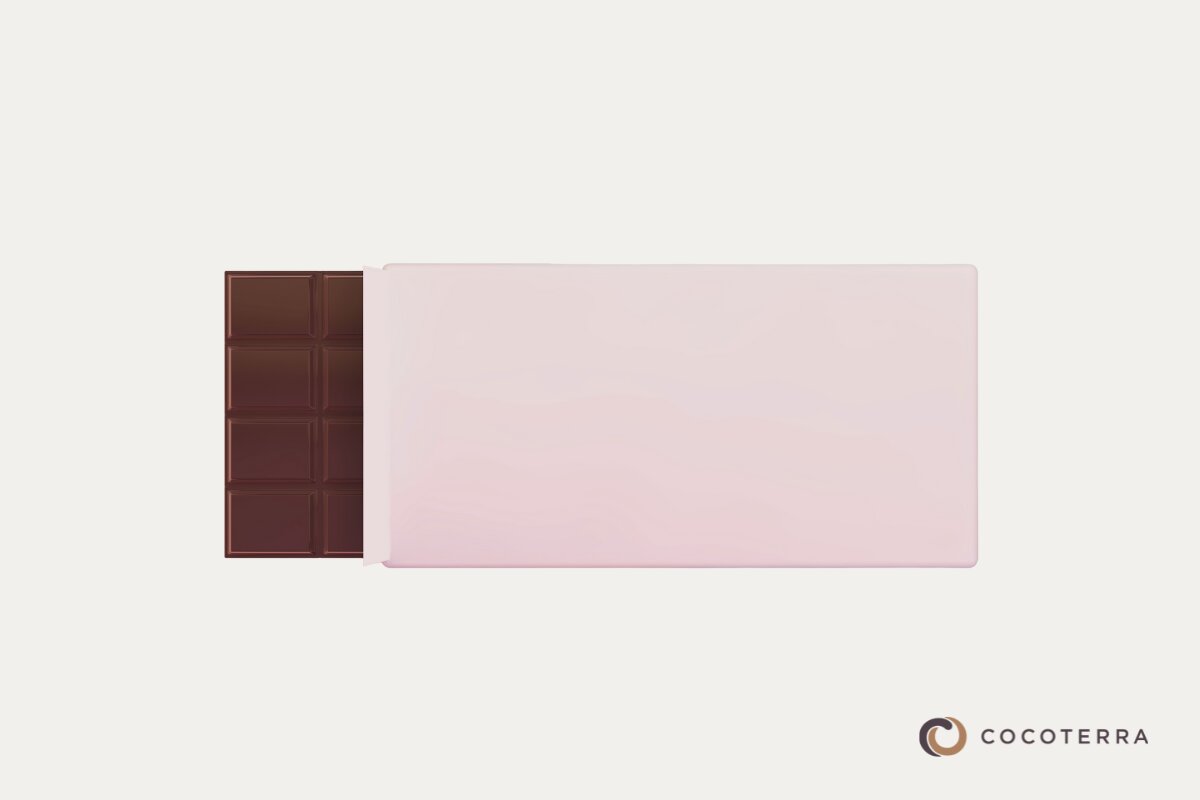Chocolate packaging has come a long way since its early days. From the simple wrappers of early chocolate bars to the elaborate designs we see today. In this article, we will discover why each aspect of chocolate packaging is so important and learn how to wrap your chocolate the proper way. We’ve included some examples of creative designs for chocolate packaging to inspire you!
Importance of packaging in preserving flavors
Proper packaging prevents the chocolate from absorbing odors from its surroundings and keeps it from being exposed to air, moisture, or other elements that can alter its taste. Oxygen is one of the main causes of flavor deterioration. Long term exposure to air can cause chocolate to develop off-flavors and become stale. A well-sealed package minimizes contact with oxygen, preserving the chocolate’s original intended taste.
Moisture exposure can cause chocolate to become grainy or lose its sheen. Effective packaging prevents moisture from being absorbed, ensuring that the chocolate maintains its desired texture and flavor.
Chocolate is highly receptive to absorbing odors from its surroundings, so proper packaging is important. The right packaging will keep the chocolate fresh and flavorful, so that everyone will experience the intended taste when they open their chocolate.
What type of packaging is used for chocolate?
Chocolate comes in many different packaging options, ranging from foil wrappers and plastic wraps to simple cardboard boxes. Foil wrappers are often used for chocolate bars and individual chocolate pieces like truffles or chocolate-covered confections. They provide an attractive and protective covering that keeps the chocolate tasting fresh.
Mass-produced chocolate bars are commonly wrapped in plastic; this type of packaging is cost-effective and also protects against moisture and external elements.
Cardboard boxes are used to package both individual chocolate bars as well as chocolate gift boxes. These boxes can be elaborate and come in various sizes and shapes. Often, if a cardboard box is used, the chocolate inside will be wrapped in plastic since the paper doesn’t provide significant protection from air, odors and moisture.
Importance of packaging in the shipping process
When it comes to shipping chocolate, the primary purpose of packaging is to protect it from external factors. Chocolate is sensitive to temperature changes, humidity, and physical impact. Well-designed packaging helps shield it from these elements and ensures it reaches its destination in good condition. It prevents moisture from getting in and retains the chocolate’s flavor, texture and appearance. You can read more about how best to ship chocolate on our CocoTerra blog.
What is the goal of chocolate packaging?
Beyond aesthetic design and required food labeling, here are five important factors to consider in creating packaging for chocolate:
Temperature Control
Some packaging for chocolates, especially those that are temperature sensitive, includes insulating or temperature-regulating materials. This is especially important if the chocolate is going to be shipped to warm or hot climates.
Barrier to External Factors
Packaging protects chocolate from outside elements that can affect its taste. Air and odors from the surrounding environment can ruin a chocolate bar’s flavor if it is not properly sealed. Once you break the seal on your chocolate, make sure to store it in an airtight container.
Protection from Light
Some packaging is designed to block or reduce light exposure, which can lead to flavor changes in chocolate over time.
Moisture Control
Moisture can cause chocolate to become grainy, lose its sheen, or develop a “sugar bloom” on the surface. Effective packaging keeps moisture out of chocolate, ensuring that it maintains its desired texture and flavor.
Damage Prevention
Chocolate packaging can also be used to prevent physical damage to the product during transit. Ideally, the packaging should include cushioning materials or structural elements that protect the chocolate from impact.
Wrap your chocolate with foil wrappers
Foil wrappers are an excellent choice for wrapping your chocolates. They are available in various colors and designs, so you can choose wrappers that fit the occasion or your personal style. Wrapping chocolates in foil not only preserves the chocolate but also enhances its visual appeal, making it a great option for gifts and special occasions.
STEP BY STEP – how to wrap your chocolate with candy foil wrappers:
- Make sure your chocolate is fully set before you wrap it.
- To properly cover your chocolate, select foils that are appropriately sized for your chocolates or cut foil wrappers into squares or rectangles that will fit your shape. The size of the pieces should be large enough to completely cover the chocolate front and back. A typical size is about 6×6 inches.
- Place your chocolate piece in the center of the foil wrapper.
- Start by folding the opposite ends of the foil over the chocolate. Complete the wrap by folding the last two sides. Make sure that when you fold the foil wrapper over the chocolate, it covers it entirely.
- Gently press down on the wrapped chocolate to secure the foil. Do not press too hard or you might crack the chocolate.
- If there are any wrinkles or creases in the foil, smooth them out to create a more polished appearance.
- If you have excess foil, trim the edges with scissors to give a finished appearance.
- Once wrapped, you can store the chocolates in a cool, dry place until you’re ready to give them away as gifts or party favors.
Chocolate packaging design
Chocolate packaging design is crucial to a brand’s success. It’s an opportunity for a brand to stand out from the rest, and including relevant information like cocoa percentage and origin details will help consumers learn more about the product they’re buying.
We hope you enjoyed this article. For more great articles, check out the rest of our CocoTerra blog.
If you have any questions or comments, feel free to contact us through our social media channels. We are @cocoterra_co on Instagram and Pinterest and @cocoterraco on X (aka Twitter) and Facebook.








